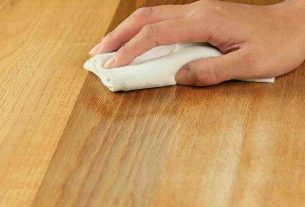Epoxy flooring is a high-performance, solvent-free, two-component coating. Due to its ability to create a strong, durable compound that is resistant to chemicals and substances, this paint can be used for various purposes, such as for painting floors and walls, carbon fibre, fibreglass and even automobiles.
What Is Epoxy Paint?
In general, epoxy paint is very versatile and can be applied to different surfaces, in addition to being able to be applied in places with large foot traffic.
The application of epoxy paint must be done by a specialisedprofessional or an experienced flooring company. This is the ensure an optimum finish to preserve the quality of the floor.
Where Can Epoxy Paint Be Applied?
Epoxy resin is very versatile and can be applied in many different places, whether residential or industrial. Apart from these places, you can consider have epoxy paint placed in the following areas:
- Commercial Hangar
- Stocks
- Laboratories
- Shops and Malls
- Production areas
- Floor for trade
- Industrials in general
- Workshops and Garages
- Indoor parking
Execution Of Epoxy Painting
In general, epoxy painting requires a step-by-step process to ensure the best and brightest quality.
Preparation
The preparation of the epoxy paint requires the cleaning of the entire floor. After which. it is possible to see and identify the irregularities, bumps and uneven surfaces of the base.
Crack Treatment
After the initial cleaning, it is necessary to carry out the treatment of cracksin the concrete. Failure to do this step will result in an epoxy paint full of cracks that is passed from the concrete level to the paint surface.
Primer
The primer is nothing more than a product that serves as a “background” for the epoxy paint. It is responsible for making the floor leveled and even. In addition, it will also plug the holes in the base.
Polishing
After the primer, it is necessary to polish the floor completely, to remove irregularities and so that the epoxy paint does not come loose over time.
Application Of Epoxy Paint
Finally, the painting is ready to be done in the chosen color. It is essential that these steps are done by a specialisedpainting professional.
Advantages Of Epoxy Paint On Floors
The coating for floors and epoxy walls, serves both for internal and external areas of houses and other areas, such as shopping malls, hospitals, gyms, restaurants, among others. This product implants a layer of thermoset plastic, and when it comes in contact with a catalyst, it is resistant and shiny.
Impact Resistant
Epoxy flooring is extremely resistant to impacts, this means that it will not crack or be damaged from physical impact and brunt force. It iscommonly used in warehouses, garages and car workshops.
Non-Slip
This paint can provide a safe and non-slip surface, providing a textured surface for an extra level of protection.
Fire Resistant
Most epoxy paints are fire-resistant. They can withstand heat up to 200 ° C or about 390 ° F. It is important to check the ink packaging for this information.
Find out more about the advantages and disadvantages of epoxy flooring on Homees.co at https://www.homees.co/articles/all-about-epoxy-flooring.





